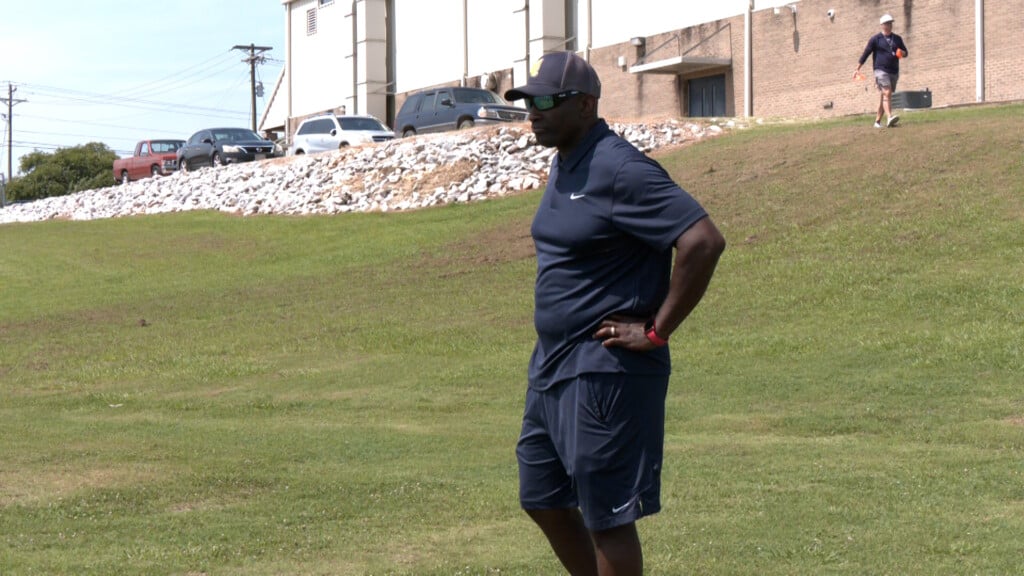What have presidents been impeached for?
Lies. Obstruction. Abusing power. Defying Congress.
Sound familiar?
These are the accusations House Democrats are leveling against President Trump after the House opened an impeachment inquiry into him. And they’re similar to the allegations that fueled America’s few previous presidential impeachment proceedings.
Only two presidents in U.S. history have been impeached — Andrew Johnson in 1868 and Bill Clinton in 1998 — and neither was removed from office. A third president, Richard Nixon, resigned in 1974 before facing a formal impeachment vote, but not before articles of impeachment against him were drafted.
The Constitution says presidents and other federal officials can be impeached for “Treason, Bribery and other High Crimes and Misdemeanors.” No president has faced impeachment for treason or bribery; all impeachment cases so far came down to what Congress considered to be “High Crimes and Misdemeanors.”
The phrase “High Crimes and Misdemeanors” is not defined in the Constitution, leaving it up to Congress to decide what qualifies in any particular case. Historians and legal scholars say it’s generally understood to mean a serious abuse of the public trust.
The Democrat-controlled House has not drafted impeachment articles against President Trump or held an official impeachment vote, so it’s not clear what specific allegations might be included.
Here a look at what led to presidents in the past facing impeachment:
How impeachment works
The House has the power to impeach the president, and the Senate, in a separate process, then decides whether to remove an impeached president from office.
The House drafts articles of impeachment outlining the president’s alleged offenses, and can vote to impeach him with a simple majority vote on any of the articles. However, impeachment in the House is not enough to remove a president from office.
The Senate then holds an impeachment trial, and ultimately votes on whether to convict or acquit the president on the articles approved by the House. A two-thirds majority of senators would need to vote for conviction in order to remove the president.
Andrew Johnson
What happened?
The 17th president was the first to be impeached.
Johnson, a Democrat from Tennessee, was President Abraham Lincoln’s running mate for Lincoln’s second term. Just 42 days after becoming vice president, Johnson ascended to the presidency following Lincoln’s assassination in April 1865. This put him in charge of a country still reeling from the Civil War, and he was soon clashing with Congress over how to handle Reconstruction.
Johnson favored a lenient approach to the former Confederate states and shocked lawmakers with some of his vetoes, including his veto of a bill that would have provided food, shelter and aid to newly freed African Americans and Southern refugees.
The final straw came in 1868, when Johnson fired Secretary of War Edwin Stanton, a Lincoln appointee who opposed Johnson’s approach to Reconstruction. House Republicans said this violated the Tenure of Office Act, a law passed one year earlier that said the Senate must approve the president’s dismissal of a cabinet member he appointed. (Johnson vetoed that bill, but Congress overrode him. The Supreme Court ruled in 1926 that the Tenure of Office Act was invalid, and it is no longer enforced.)
What did the impeachment articles say?
In February 1868, the House voted in favor of an impeachment resolution against Johnson. A week later, the House adopted 11 articles of impeachment.
Most of the articles centered on Johnson’s dismissal of Stanton, alleging that the move defied the Senate and violated the Constitution. One article accused Johnson of unlawfully ordering that all military orders had to come from the General of the Army.
Another article said Johnson gave speeches that attempted “to bring into disgrace, ridicule, hatred, contempt and reproach, the Congress of the United States.” That article said Johnson had declared “with a loud voice, certain intemperate, inflammatory and scandalous harangues,” and that he had uttered “loud threats and bitter menace” toward Congress.
The text of the impeachment articles repeatedly said that Johnson was “unmindful of the high duties of his oath of office.”
What was the outcome?
Only three of the impeachment articles were voted on by the Senate — two about the appointment of Stanton’s replacement, and one about insulting and disrupting Congress.
On each of these three articles, the Senate acquitted Johnson by a single vote. He remained in office until 1869, leaving after one term when he failed to win his own party’s nomination.
Richard Nixon
What happened?
Nixon, a Republican, resigned before facing a formal impeachment vote. But he was the first president since Johnson to have impeachment articles drafted against him.
The impeachment process for Nixon started in October 1973, after the Watergate scandal had dragged on for more than a year.
Nixon consistently resisted House subpoenas as the Watergate investigation intensified. The impeachment process began just days after the “Saturday Night Massacre,” when Nixon fired the special prosecutor investigating Watergate, Archibald Cox, and accepted the resignations of Attorney General Elliot Richardson and Deputy Attorney General William Ruckelshaus.
In the impeachment proceedings, Nixon was not directly implicated in the break-in of the Democratic National Committee headquarters in Washington. Rather, the focus was on his efforts to obstruct the Watergate investigation.
What did the impeachment articles say?
The House Judiciary Committee approved three articles of impeachment against Nixon in July 1974.
The first said Nixon had worked with subordinates to “delay, impede, and obstruct the investigation” into the Watergate break-in to “cover up, conceal and protect those responsible; and to conceal the existence and scope of other unlawful covert activities.”
The second article said the president had “repeatedly engaged in conduct violating the constitutional rights of citizens” by “impairing the due and proper administration of justice and the conduct of lawful inquiries.”
The third article focused on Nixon’s resistance of subpoenas from the House committee. It said the president had “interposed the powers of the Presidency against the lawful subpoenas of the House of Representatives, thereby assuming to himself functions and judgments necessary to the exercise of the sole power of impeachment vested by the Constitution in the House of Representatives.”
What was the outcome?
The House Judiciary Committee approved all three articles, but the articles never reached a full House vote. An impeachment seemed inevitable after the U.S. Supreme Court ordered the White House to release the tape of a phone call that showed Nixon had ordered a cover-up of Watergate. Even the Republican House leader said he would vote to impeach Nixon.
Nixon resigned on August 9, 1974. He became the first, and so far only, U.S. president to resign. And even though he was not technically impeached, he was also the first president to leave office due to an impeachment process.
Bill Clinton
What happened?
More than 130 years after Johnson’s impeachment, Clinton, a Democrat, became the second president to be impeached.
Clinton’s impeachment process sprouted from the Starr Report — the result of a four-year independent counsel investigation into his administration — and from a lawsuit filed by Paula Jones, a woman accusing Clinton of sexual misconduct.
In a deposition for the Jones lawsuit, Clinton falsely claimed that he did not have a sexual relationship with White House intern Monica Lewinsky. The Starr Report said Clinton tried to cover up his affair with Lewinsky, and had pressured his secretary Betty Currie to repeat his denials.
What did the impeachment articles say?
The Republican-held House drafted four articles of impeachment against Clinton, but only two were approved.
The first article that passed said Clinton had provided “perjurious, false and misleading testimony” to a grand jury in the Jones case. It was approved in a 228–206 vote.
The second approved article, which passed with a 221–212 vote, said Clinton had “obstructed justice in an effort to delay, impede, cover up and conceal the existence of evidence related to the Jones case.”
An article for a second perjury count, and another article accusing Clinton of abuse of power, failed to get a majority vote.
Clinton was impeached in December 1998.
What was the outcome?
A Republican-controlled Senate acquitted Clinton on both charges in February 1999. The Senate trial resulted in 45 “guilty” votes for perjury and 50 “guilty” votes on obstruction — both short of the two-thirds vote needed to convict and remove the president.
All 45 Democrats in the Senate voted “not guilty” on both charges, and several Republicans joined them, with some arguing that Clinton did not deserve to be removed from the White House for these offenses.
Clinton remained in office and completed his second term.





Leave a Reply